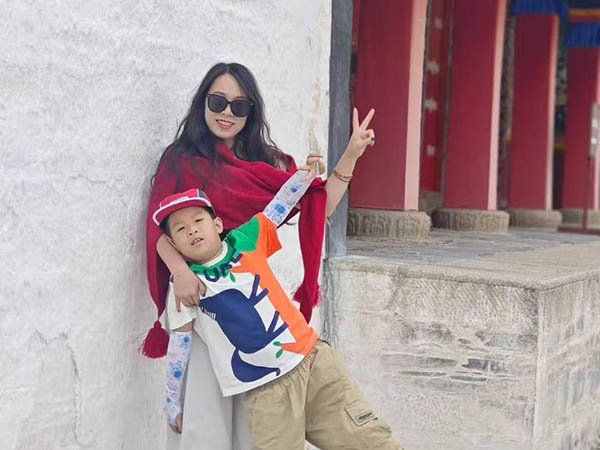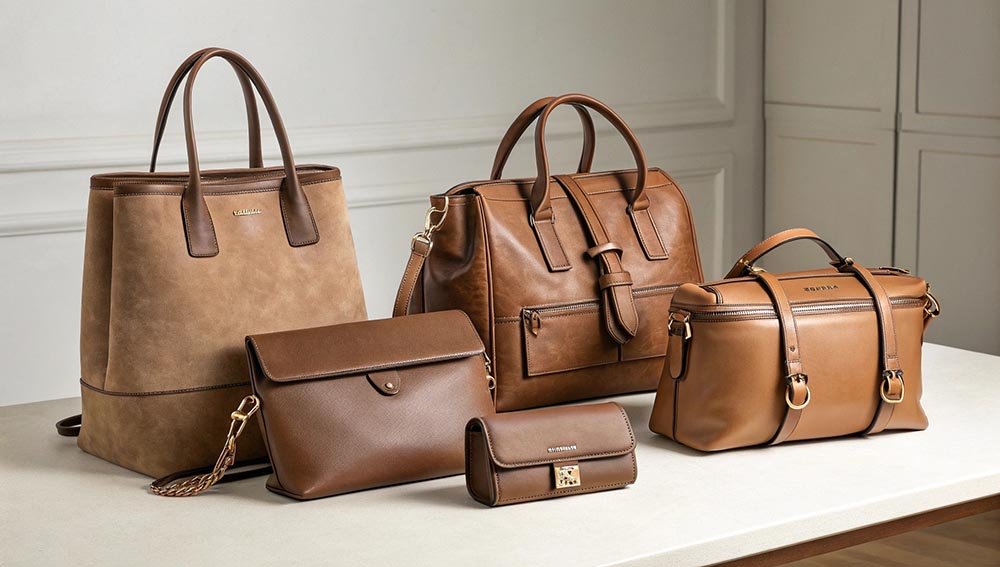Do you want to launch a custom leather bag line but feel overwhelmed by the process? Stop using generic bags that blur your brand identity and start thinking about unique packaging.
To customize OEM leather bags effectively, you must define your brand’s core values and target audience first. A great OEM project balances your aesthetic vision with the manufacturer’s production expertise, ensuring material, branding, and quality all align with your desired market tier.

When you choose to customize, you are not just making a bag; you are creating a lasting piece of your brand story. This guide will walk you through the essential steps, from initial concept to final quality control, ensuring your custom leather bag perfectly represents your vision.
Why Wholesale Custom Leather Bags Build Brand Identity?
Is your current packaging just a container, or is it a powerful extension of your brand? A thoughtful leather bag can elevate your brand and establish an unforgettable impression with customers.
Custom leather bags boost brand identity because their durability provides continuous, long-term brand exposure, turning a product into a functional marketing tool.They elevate perceived quality and are often suitable for small-volume projects, making premium branding accessible to growing businesses.

Customizing a leather bag instantly signals a higher level of brand quality and commitment. The nature of a leather bag is its durability; it becomes a functional, long-lasting item in the customer’s daily life. This longevity translates directly into extended, organic brand exposure that is far more valuable than temporary packaging. The bag constantly reminds the user of your brand’s values and quality.
For many businesses, particularly creative startups and SMEs, OEM leather bag options are suitable because they support smaller batch sizes compared to massive production runs. This flexibility is key to balancing quality, cost, and inventory risk.
Before even touching a design sketch, you must define the bag’s true purpose and the audience—is it it for a high-end corporate gift, a sustainable travel line, or a practical daily accessory? This clarity shapes the material choices, the quality grade, and the final branding placement.
For instance, a luxury brand might choose compact, full-grain executive totes with subtle branding, while an adventure brand might select durable duffels with laser-engraved patches. Thoughtful packaging helps thoughtful businesses grow, and a well-designed leather bag is the ultimate expression of that principle. It ensures the product not only protects but also profoundly speaks for your brand.
| Target Audience | Suggested Bag Style | Ideal Branding Method | Message Conveyed |
|---|---|---|---|
| Corporate Clients | Executive Tote or Briefcase | Subtle Debossing or Metal Plate | Professionalism, High Quality, Permanence |
| E-commerce Retail | Compact Pouch or Clutch | Foil Stamping or Laser Engraved Tag | Modern, Value, Attention to Detail |
| Adventure/Travel Brand | Durable Duffel or Backpack | Debossed Patch or Custom Zipper Pull | Reliability, Functionality, Longevity |
What to Customize on OEM Leather Bags?
You should customize the three key elements: the leather type, the logo application, and all accessories (zippers, inner lining, and packaging). Each choice must align to convey your intended brand quality and story.
Do you think customization is only about your logo? The power of OEM lies in customizing every detail of your bag, not just the surface; it’s about aligning the material, hardware, and branding methods to create a cohesive and valuable product.

Customization encompasses more than just adding a logo; it is about building the product from the ground up to reflect your brand tier. The primary decision is the leather material. Options range from premium full-grain leather and durable top-grain, to ethical alternatives like microfiber leather, recycled leather, or cost-effective PU leather. Each material has different tactile qualities and dictates how colors and finishes are applied.
Secondly, the logo and branding methods are essential for visual impact. A premium, subtle approach might favor debossing or embossing—creating a clean, timeless mark. For greater visibility or a striking look, heat stamping or foil stamping adds metallic or colored accents. For intricate designs or metal components, laser engraving is precise and durable.
Thirdly, the components and accessories significantly elevate the perceived value. This includes selecting the quality and finish of zippers, metal hardware (like buckles and rivets), the fabric of the inner lining, and the presentation packaging (dust bags, tags).
Custom hardware, such as branded zipper pulls or metal badges, can non-intrusively elevate the bag’s value without cluttering the main surface. You must ensure that your brand colors map accurately to the leather tones and hardware finishes, and you should always request proofs or digital renderings to confirm consistency before mass production.
| Branding Method | Ideal Application | Design Pros | Design Cons |
|---|---|---|---|
| Embossing/Debossing | Executive totes, premium wallets | Subtle, high-end feel, extremely durable | Higher die-cut setup costs, less visible on highly textured leather |
| Heat/Foil Stamping | Compact pouches, high visibility campaigns | Adds striking metallic or color accents, high visual impact | Requires compatible leather; potential for surface wear over time |
| Laser Engraving | Metal tags, leather patches (precise logos) | Very clean lines, works well for intricate and detailed logos | Contrast depends on the leather surface and color; may look faded on some hides |
| Custom Hardware/Tags | Travel duffels, backpacks (non-intrusive) | Elevates perceived value, allows for easy branding updates in future runs | Adds manufacturing steps and potential fit issues with certain bag designs |
Step-by-Step Guide to Designing Custom Leather Bags?
Ready to move from idea to product, but unsure of the path? A structured five-step process prevents mistakes and ensures a smooth OEM production run.
Successfully designing a custom leather bag involves a five-stage cycle: from defining your brand’s specific needs and aesthetic vision, through material selection and detailed sampling, to final production sign-off and rigorous quality control. Planning and communication drive consistency.

Customization is a journey that requires discipline and partnership. A successful custom project always starts with a clear roadmap.
Step One: Define Objectives and Audience. This is where your brand positioning and the product’s intended use are clearly articulated. You must define what the bag represents (luxury, practicality, sustainability) and who will receive it (e.g., key clients, staff, or retail customers). This foundational decision shapes the selection of leather grade and branding placement.
Step Two: Select Style, Quality, and Customization. Choose a bag silhouette that fits your message (e.g., a slim leather pouch for gifts, a messenger bag for corporate travel). Provide the OEM manufacturer with a comprehensive tech pack/specification that details dimensions, all materials, color codes, hardware, and specific features. You must also align branding with production realities by confirming the OEM’s minimum order quantities (MOQs) and lead times early on.
Step Three: Develop Samples (Prototyping). The manufacturer creates a physical sample. You must meticulously inspect the sample for stitching quality, hardware function, leather finish, and logo fidelity. This stage is non-negotiable, as it is your chance to confirm tolerances for logo placement and size before mass production.
Step Four: Production. Once the sample is approved and signed off, the full production run begins. The factory adheres strictly to the approved prototype and maintains consistency.
Step Five: Quality Control (QC) and Logistics. Implement rigorous QC at multiple stages, including material inspection, in-process checks, and a final pre-shipment check. This ensures consistency across the entire batch, meeting your brand’s quality standards. Finally, define the packaging (dust bags, gift boxes) and plan shipping logistics to ensure the products are safely received.
Why Choosing the Right OEM Leather Bag Manufacturer Matters?
Are all manufacturers created equal when it comes to custom leather bags? The right OEM partner is more than a supplier; they are a critical extension of your brand’s quality team.
You must choose an OEM manufacturer with deep experience in international trade, a proven record of consistent batch quality, and flexibility for low MOQs to support initial growth. Factories with ethical certifications (like BSCI) or sustainable leather sourcing practices offer a significant competitive advantage that aligns with modern brand values.

Choosing the manufacturer defines your product’s success and your brand’s reputation. A factory with extensive OEM experience is crucial because they already understand the complex requirements of international buyers—covering everything from material compliance to precise packaging specifications.
This expertise translates directly into stable product quality across every batch, minimizing the risk of defects that could damage your brand’s image. For new or smaller brands, the friendliness to low minimum order quantities (MOQs) is a major advantage, allowing you to manage cash flow and test new designs without huge inventory burdens.
Furthermore, the manufacturer’s values must align with your brand’s. You should prioritize factories that use environmental or ethical certifications like ISO, BSCI, or utilize eco-friendly materials such as sustainable or recycled leather alternatives. These certifications enhance your brand’s credibility with conscious consumers.
A good OEM partner does more than just manufacture; they act as a design consultant, helping to refine your concept and coordinate the technical aspects of design with the realities of mass production. Before committing, ask about their after-sales support and their protocols for managing potential defects, as this reflects their commitment to a long-term partnership.
| Vetting Criteria | Why It Matters for Your Brand | What to Request |
|---|---|---|
| International OEM Experience | Ensures they understand global compliance, logistics, and buyer expectations. | Request a portfolio of similar B2B projects and trade references. |
| Quality Consistency | Guarantees every bag meets the approved sample, protecting brand reputation. | Ask for their standard QC checklist and inspection reports (AQL levels). |
| MOQ Flexibility | Crucial for managing inventory and risk, especially for startups and new product lines. | Confirm the minimum quantity and price breaks clearly in the quotation. |
| Ethical/Sustainable Sourcing | Aligns the product with growing consumer values and brand social responsibility. | Request ISO, BSCI, or relevant material sustainability certifications. |
Conclusion
A successful custom leather bag project begins and ends with clarity. Define your brand concept, choose the right materials and methods, and partner with an experienced OEM to bring your high-quality vision to life.
Frequently Asked Questions
Q: Why is defining the target end-user crucial before starting the leather bag design process?
A: Defining the end-user (e.g., staff, clients, or retail customers) dictates the bag’s necessary function, size, material durability, and the appropriate branding style (e.g., luxury vs. practical).
Q: How does the quality of accessories, like zippers and hardware, impact the perceived value of a custom leather bag?
A: High-quality hardware and accessories are crucial because they affect both the bag’s functionality and its overall perceived value, signaling attention to detail and reinforcing the brand’s quality commitment.
Q: What is the primary difference between embossing and debossing as branding methods on leather?
A: Embossing raises the logo image above the leather surface, while debossing presses the image down into the leather, creating a subtle, recessed mark suitable for a premium, understated look.
Q: Beyond the main leather material, what other customizable textile components should a brand consider?
A: Brands should focus on the inner lining material, which affects the bag’s interior feel and protection, and the thread color used for stitching, which can be customized to match or contrast with the main brand colors.
Q: Why is securing a physical sample (prototyping) a mandatory step before mass production?
A: Prototyping allows the brand to physically inspect the stitching quality, test the functionality, confirm logo placement tolerances, and approve the material and color fidelity before committing to the full order.
Q: How can a small business use custom packaging (like a dust bag) to enhance the customer experience?
A: Custom packaging, such as a branded dust bag or gift box, significantly elevates the unboxing experience, reinforces brand identity, and provides necessary protection for the product after purchase.
Q: What are the risks of omitting a detailed technical pack (tech pack) when ordering OEM leather bags?
A: Without a detailed tech pack, the manufacturer must guess specifications, increasing the likelihood of production errors, inconsistencies between batches, and significant delays during the sampling and revision phase.
Q: How should a brand choose the appropriate leather grade (e.g., full-grain vs. corrected-grain) to align with its positioning?
A: The choice of leather grade must align with the brand’s tier: higher-end brands choose full-grain for maximum quality, while practical or budget-conscious brands may opt for corrected-grain or sustainable alternatives.
Q: What is meant by "batch-to-batch consistency," and why is it vital for long-term branding?
A: Batch-to-batch consistency means ensuring that all products from different production runs maintain the exact same quality, color, and finish standards, which is vital for building customer trust and maintaining brand integrity.
Q: What key sustainability and ethical questions should a brand ask a potential manufacturer?
A: Brands should inquire about material sourcing (e.g., recycled or vegan options), the factory’s labor practices, and whether they hold relevant environmental or social compliance certifications like ISO or BSCI.




